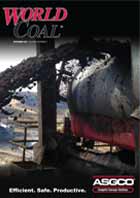Editorial comment
There is something odd going on in Germany’s power market. In a land proud of its environmental credentials and where renewables make up almost half of its electricity generating capacity, carbon emissions are rising and coal still dominates the electricity mix. Indeed, new figures from the German thinktank, the Fraunhofer Institute, show that coal-fired power plants increased production by about 5% in the first 9 months of 2013, while coal’s share of the energy mix is on track to break through 50% this year, according to analysis by Platts.
Register for free »
Get started now for absolutely FREE, no credit card required.
The factors behind this are well known. A glut in the global supply of coal caused, in part, by the shale-gas revolution in the US, has seen coal prices fall well below the relative price of gas in Europe. At the same time, the price of carbon on the EU’s Emissions Trading Scheme (ETS) has crashed as permits remain in oversupply, while recession has cut demand for them. This means that, according to data from Platts, on 7 October, the German year-ahead clean dark spread was a healthy O 9.18/MWh – the highest since December 2012 – while the German year-ahead clean spark languished at D 16.17/MWh.
Gas-fired electricity generation is also being hit by Germany’s booming renewables sector, which is providing an increasing share of electricity during the midday peak demand period – a role that was traditionally played by flexible gas-fired power plants. On one summer’s day in June, Germany’s solar and wind generators produced 28.9 GW – more than half of the total. As the grid is legally bound to take this electricity first, the shift to renewables is pushing gas-fired power out of the energy mix. Gas’s share of Germany’s energy mix was only 11% in 2012 and figures from the Fraunhofer Institute show that it is down further this year, dropping 18% in the first 9 months.
Finally, there is the simple fact that there is too much generating capacity in Germany – and in Europe. This has depressed wholesale electricity prices and cut the profitability of power plants further. Against this backdrop, it is little wonder that 30 GW of gas-fired capacity has been mothballed in Europe, including some brand new plants.
These factors have combined to make a mockery of Germany’s much-vaunted environmental credentials. And they are not limited to Europe’s largest economy. Across the continent there is talk of a coal renaissance that has been made possible by the failure of the EU’s landmark environmental measure: the ETS. As I mentioned last month, figures from Thomson Reuters Point Carbon recently suggested that the period of low carbon prices could continue well into the next decade. This will “further boost coal-fired power generation in the EU […] and the dominating role of coal in the fuel mix of major EU countries, including Germany, Poland and the UK,” according to Yan Qin, senior analyst at Thomson Reuters Point Carbon. Unlikely though it would have seemed even a couple of years ago, Europe’s coal industry still has life in its old bones.


